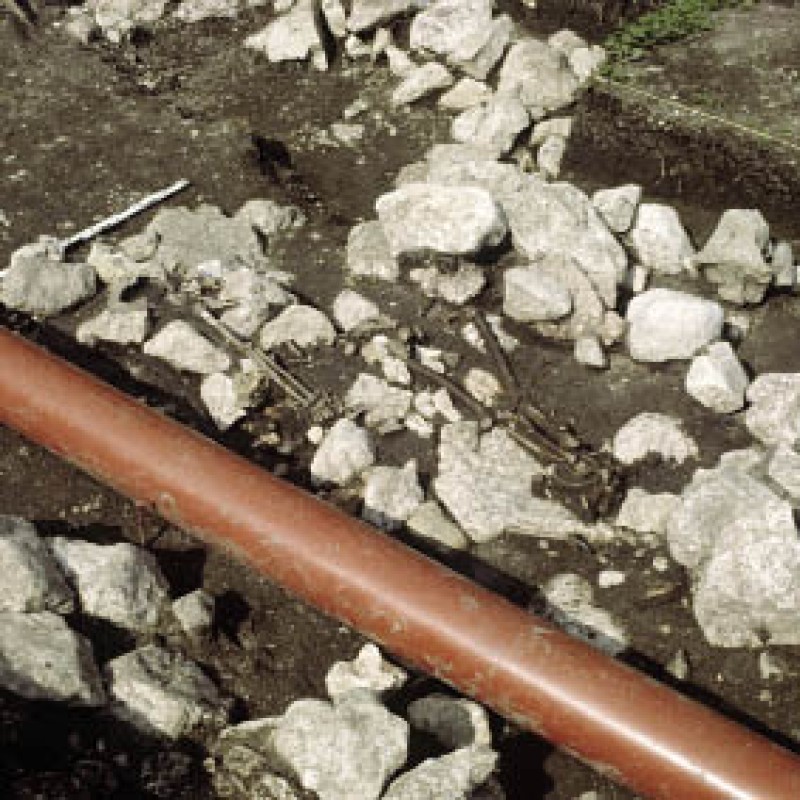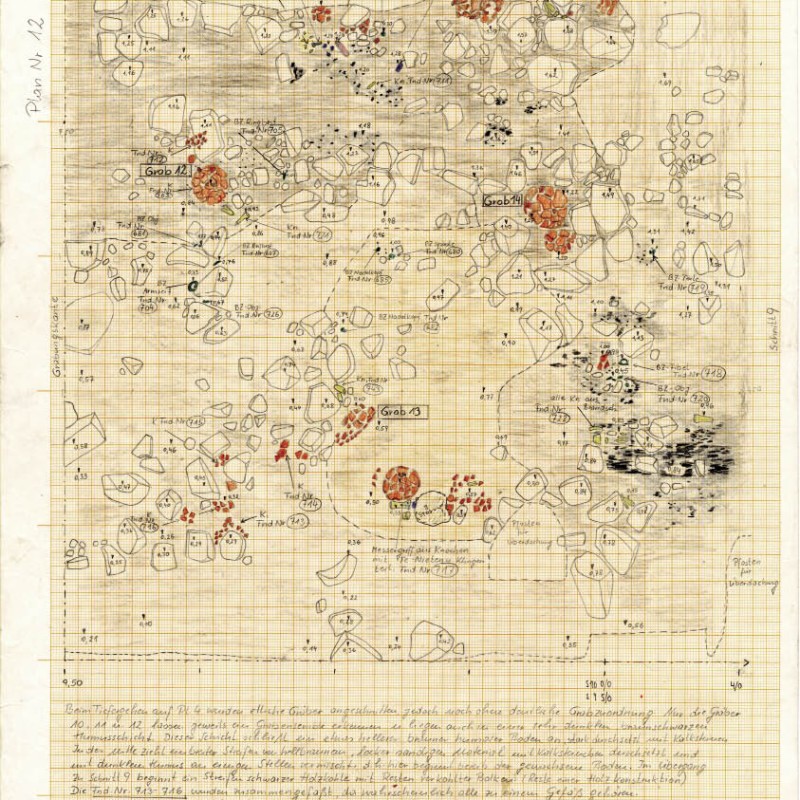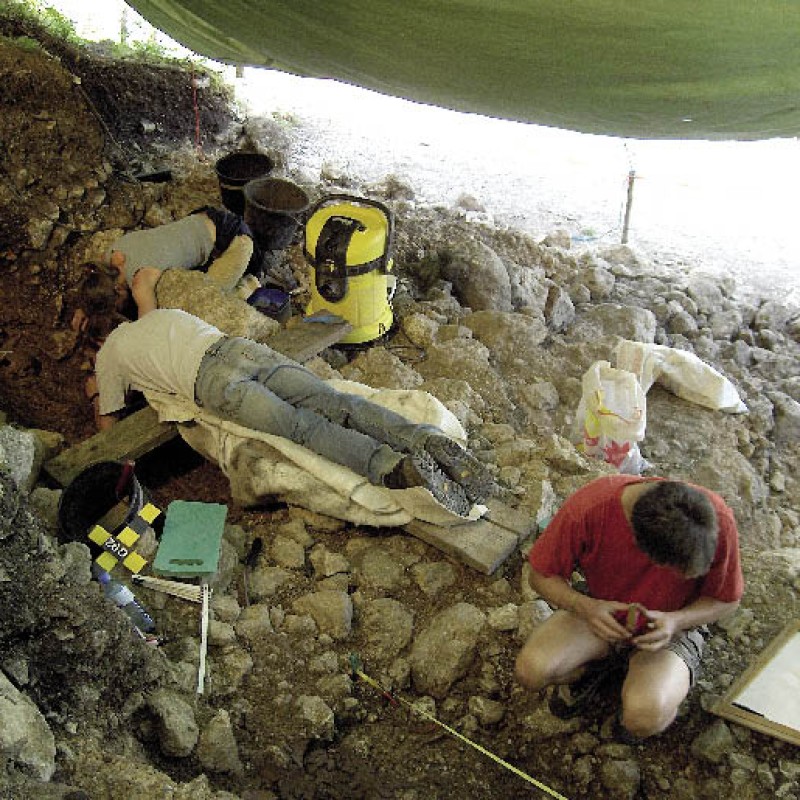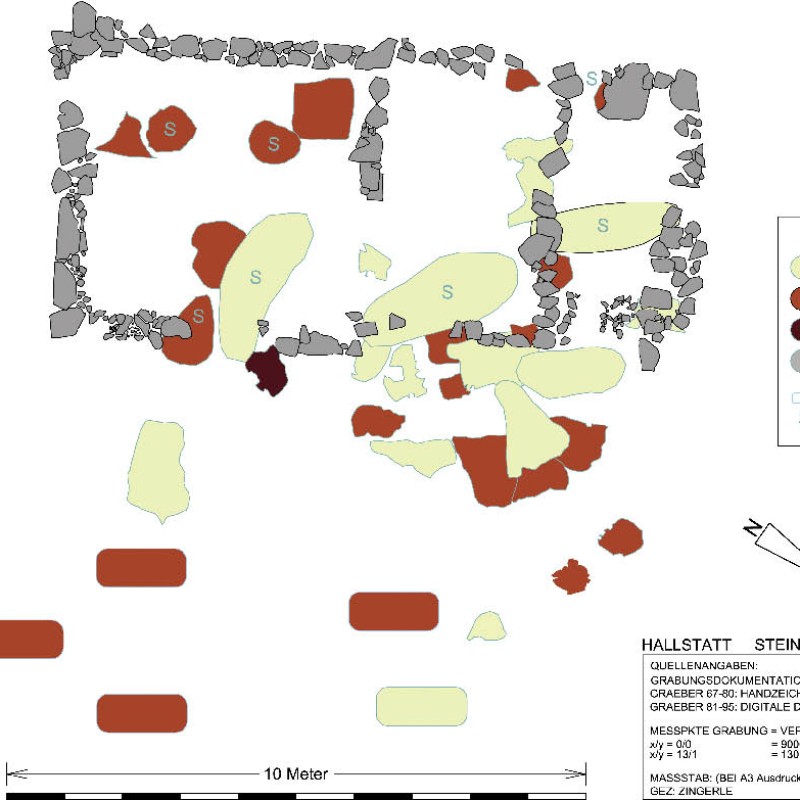"Langmoosbach-Süd" site
The archaeological treasure of the Salzkammergut lies buried high above today's town center.
In the years 2009 to 2013, several graves from the Hallstatt period were excavated at a depth of just 40 to 100 cm across
the entire area of the "Langmoosbach-Süd" excavation cut.
Remarkable graves
One particularly remarkable discovery was a woman's grave with more than 500 beads, predominantly made of amber. A few meters
to the south of this lay the remains of a large warrior who had been buried with a pompous bronze belt plate and a gold earring,
among other things.
Adjacent to it, an additional female grave was discovered with the cremated bones of what must have been a highly respected
person; next to the burnt remains was a heavily ornamented bronze bowl with a handle in the shape of a cow with a calf - the
impressive so-called Cow-Calf Vessel.
Subsequently, in a north-easterly direction, there was the skeleton of another very tall male who had been buried on a full
bearskin, as can be deduced from the claws. Slightly beyond the skull was a lavish bronze dagger, presumably also a burial
gift.
These burials expand our existing knowledge of the significant early Iron Age cemetery in the Hallstatt high valley, which
was used between approx. 800 and 370 BC.
Sensational discovery
However, a true sensation awaited the NHM Vienna archaeologists deeper in the ground. A complex wooden structure had been
preserved in the ground for over 3,000 years, sealed airtight under a thick mudflow deposit of rubble and clay. It dates back
to the Late Bronze Age and was erected in 1139 BC. This exact chronological placement is made possible by dendrochronological
dating, which is based on the unmistakable annual ring pattern of the timbers used.
The block structure has hardly changed its position over the millennia. The outer part could not be captured in its entirety,
as a large part of it lies outside the investigation cut. Altogether it is likely to be at least 5 x 5 m in size. Very striking
elements are the uniformly chopped, triangular scores, which were not previously recorded. The side walls of the outer construction
are conventionally blocked together at the corners.
The inner structure is a mixed construction of post and beam construction. It was erected from parallel double walls; the
gaps were sealed with dense clay, creating a watertight structure measuring around 2 x 2 m with a depth of 150 cm. The lower
end of the wooden structure lay about 5 m below the present-day surface, which posed an increasing challenge for the excavators
when uncovering it.
The archaeological treasure of the Salzkammergut lies buried high above today's town center.
Open questions
Besides the excellent condition of the structure, numerous artifacts made of organic material also represent a real treasure
for archaeological research. In addition, numerous botanical and zoological remains have been preserved in the humid climate
under exclusion of air. The analyses still to be conducted will provide valuable insight into the climate and environmental
conditions around 1,100 BC.
We do not yet know what the structure was intended for. It was certainly not a living space; instead it was likely used for
commercial purposes. It is very similar to buildings used for curing meat, but differs completely from them in its essential
features.
As the most recent finds from the fill material reveal, the construction was buried in the middle of the 11th century BC,
only to be subsequently forgotten for more than 3,000 years.
Visit us!
The investigations in this area have not yet been completed and further excavations are carried out every summer by the Prehistoric
Department of the NHM Vienna. If you are interested, you are welcome to visit them.
Would you like to find out more? Visit the 3D-Museum of the NHM Vienna and discover 3d visualisations and models from the prehistoric salt mine of the NHM-branch Hallstatt.





